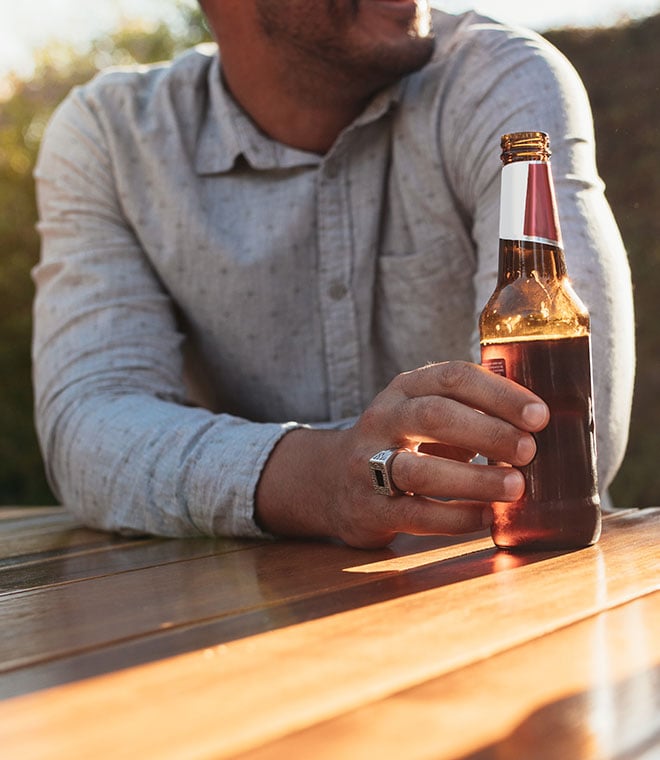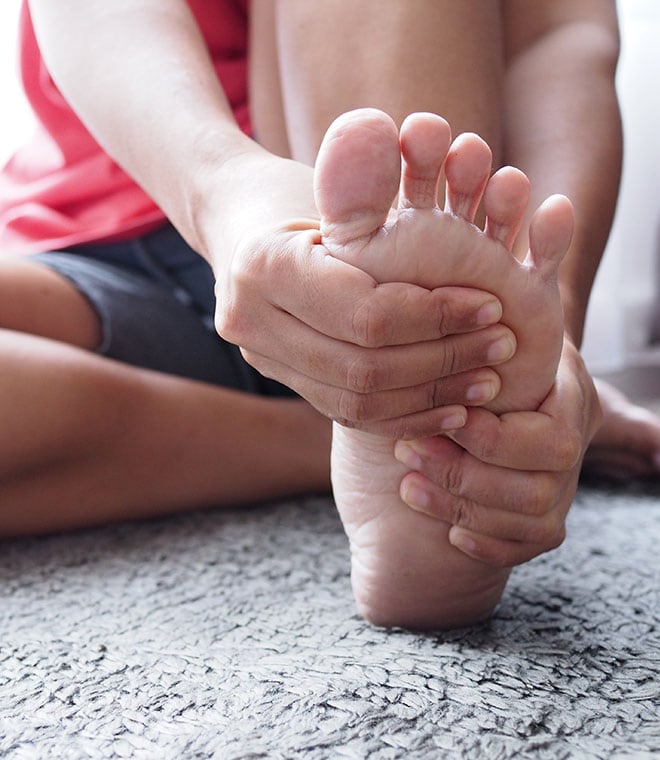Health
What are the different tests for diabetes?
By Jenilee Matz, MPH May 21, 2024 • 11 min
If you have certain risk factors or symptoms, your healthcare provider may decide to test you for diabetes. Diabetes is diagnosed through a blood test and those diagnosed with diabetes might be asked to test their blood sugar regularly. Home blood sugar testing can help reveal if your treatment plan is working. Here you'll learn about blood tests used to diagnose and monitor diabetes.
Blood tests used to diagnose diabetes and prediabetes
Several blood tests are used to diagnose diabetes. These tests may be repeated on a different day to validate the results before diabetes is finally diagnosed, but not always.
These blood tests can also tell if you have prediabetes. Prediabetes means that your blood sugar is higher than normal blood glucose levels, but not high enough for a diabetes diagnosis.
Prediabetes is a warning sign of diabetes, and there are no clear symptoms of prediabetes. People with prediabetes are at high risk for developing diabetes, but diabetes can often be prevented with lifestyle changes, such as losing weight, eating nutritious foods and getting regular exercise. If you have prediabetes, your healthcare provider will likely test you for type 2 diabetes every one to two years.
Various blood tests can be used to diagnose diabetes:
Fasting plasma glucose test
This test measures your fasting blood glucose levels after you haven't had anything to eat or drink, except water, for at least eight hours.
| Fasting plasma glucose reading | Result |
|---|---|
| Less than 100 mg/dL | Normal |
| 100–125 mg/dL | Prediabetes |
| 126 mg/dL or higher | Diabetes |
Hemoglobin A1C test
What does A1C measure? It reflects your average blood sugar over a two- to three-month period. Hemoglobin is part of red blood cells that carries oxygen to the cells, and glucose attaches to the hemoglobin. The higher the amount of glucose in your bloodstream, the more glucose will attach to the hemoglobin.
The A1C test, which does not require fasting, is reported as a percentage and measures the amount of hemoglobin with attached glucose. This test can be used to diagnose type 2 diabetes and prediabetes.
| A1C levels | Result |
|---|---|
| Less than 5.7% | Normal hemoglobin A1C level |
| 5.7%–6.4% | Prediabetes hemoglobin A1C level |
| 6.5% or higher | Diabetes or high hemoglobin A1C level |
If you already have diabetes, an A1C diabetes test can also tell how well your blood sugar is under control. This test result allows your healthcare provider to see what your blood sugar has been over the past three months and adjust your treatment plan if needed.
Your A1C target is often personalized and changes over time. Ask your healthcare provider what A1C goal is right for you. Studies show that some people can reduce their risk of diabetes-related complications if they keep their A1C below 7%. It's recommended that people with diabetes have their A1C measured at least two times per year.
Oral glucose tolerance test
This test reveals how your body processes glucose. It measures how quickly your blood sugar returns to normal after fasting and then drinking a sweetened beverage containing 75 grams of glucose. You'll have your blood sugar levels checked before and two hours after drinking the liquid.
| Oral glucose tolerance reading two hours after drinking 75 grams of glucose | Result |
|---|---|
| Less than 140 mg/dL | Normal |
| 140–199 mg/dL | Prediabetes |
| 200 mg/dL or higher | Diabetes |
Pregnant women receive a modified version of the glucose tolerance test to check for gestational diabetes. This usually happens between weeks 24 and 28 of the pregnancy.
- One-step approach: This test involves fasting for at least eight hours and then drinking 75 grams of glucose. You'll have your blood sugar levels checked at fasting, at one hour after drinking the liquid and at two hours after drinking the liquid.
- Two-step approach: This doesn't require fasting and is often done in two steps to confirm a diagnosis. First, you'll be asked to drink a glucose-containing liquid. One hour after consuming the beverage, your blood will be drawn. If your blood sugar reading is 130 mg/dL or higher, your healthcare provider will likely have you take a three-hour oral glucose tolerance test at another time before making a gestational diabetes diagnosis.
Random blood glucose test
This test doesn't require fasting and can be done at any time. A blood sugar reading higher than 200 mg/dL indicates diabetes.
Home blood glucose testing
After you're diagnosed with diabetes, your healthcare provider may tell you to test your blood sugar regularly at home. Self-testing can help you monitor whether your treatment plan is working. Your diabetes healthcare team will give you specific advice on how to keep your blood sugar levels in a healthy range.
Blood glucose meters or glucometers are devices that allow you to test your blood sugar at home. Most meters require you to prick your skin with a lancing device to draw blood. You place a drop of blood onto a test strip that's inserted in the meter. Then the meter displays your current blood sugar level. This is the most common way to monitor blood glucose levels at home.
There's also another method of testing blood sugar levels using a device called a continuous glucose monitor. A continuous glucose monitor uses a small sensor that's placed under your skin, often in your abdomen or arm. The sensor measures your blood sugar at frequent intervals and sends the results to a device you wear on your body. The device produces a digital readout, so you can know your blood sugar levels in real time and get a better sense of what is happening with your blood sugar throughout the day.
If I have diabetes what should my blood sugar be?
The normal blood sugar range for someone with diabetes varies from person to person. Your healthcare provider will tell you what a good blood sugar level is for you based on your age and health. According to the American Diabetes Association, general goal diabetic blood sugar ranges are as follows. Still, you should always strive to meet the diabetes sugar level targets your healthcare provider sets for you.
| Time of blood sugar test | Diabetes blood sugar reading |
|---|---|
| Fasting or before breakfast | 80–130 mg/dL |
| Before lunch, dinner or a snack | 80–130 mg/dL |
| One to two hours after beginning a meal | < 180 mg/dL |
High and low blood sugar
Sometimes your blood sugar may not be in your target range. Your healthcare provider can tell you what readings are considered high and low blood sugar levels for you. It's important to know how to recognize the symptoms of high and low blood sugar. Ask your healthcare provider what actions you should take if your blood sugar is too high or too low.
Hyperglycemia is the medical term for high blood sugar.
Symptoms of high blood sugar include:
- High blood sugar readings
- Blurred vision
- Confusion or difficulty concentrating
- Increased thirst
- Frequent urination
- Fruity smelling breath
Hypoglycemia (low blood sugar) occurs when your blood glucose drops below normal blood sugar levels. For many people with diabetes, this means below 70 mg/dL, but your healthcare provider may have a different threshold for you. Symptoms of low blood sugar can come on very quickly, can vary among people and depend on how low your blood sugar falls. Severe hypoglycemia is when your blood sugar falls so low that you're unable to treat yourself. This condition is an emergency and can lead to a diabetic seizure and brain damage.
Mild-to-moderate low blood sugar symptoms include:
- Shakiness
- Dizziness or lightheadedness
- Irritability
- Nervousness
- Sweating
- Hunger
- Headache
- Blurred vision
- Sleepiness
- Confusion or disorientation
- Weakness
- Trouble concentrating
- Changes in personality
- Fast or irregular heartbeat
- Pale complexion
Symptoms of severe low blood sugar include:
- Convulsions (jerky movements) or seizures
- Confusion
- Visual disturbances
- Loss of consciousness
There are a variety of blood tests used to diagnose diabetes and help guide your treatment plan. If you have diabetes, work closely with your healthcare provider to learn your target blood glucose range and monitor your blood sugar as directed. Then follow your treatment plan exactly as prescribed so you can keep your blood sugar under control.
Clinically reviewed and updated by Julie McDaniel, MSN, RN, CRNI, May 2024.
Sources:
- https://diabetesjournals.org/care/article/45/Supplement_1/S17/138925/2-Classification-and-Diagnosis-of-Diabetes
- https://www.niddk.nih.gov/health-information/diabetes/overview/tests-diagnosis
- http://www.diabetes.org/diabetes-basics/diagnosis/
- https://www.uptodate.com/contents/clinical-presentation-and-diagnosis-of-diabetes-mellitus-in-adults
- https://www.niddk.nih.gov/health-information/diabetes/overview/tests-diagnosis/a1c-test
- https://medlineplus.gov/ency/article/003482.htm
- https://www.niddk.nih.gov/health-information/diabetes/overview/preventing-problems/low-blood-glucose-hypoglycemia
- https://diabetesjournals.org/care/article/45/Supplement_1/S83/138927/6-Glycemic-Targets-Standards-of-Medical-Care-in
- https://www.cdc.gov/diabetes/basics/getting-tested.html
- https://www.mayoclinic.org/diseases-conditions/diabetes/in-depth/blood-sugar/art-20046628
- https://www.mayoclinic.org/tests-procedures/glucose-tolerance-test/about/pac-20394296
- https://my.clevelandclinic.org/health/diagnostics/9696-glucose-test-pregnancy
- https://www.mayoclinic.org/diseases-conditions/hypoglycemia/symptoms-causes/syc-20373685



